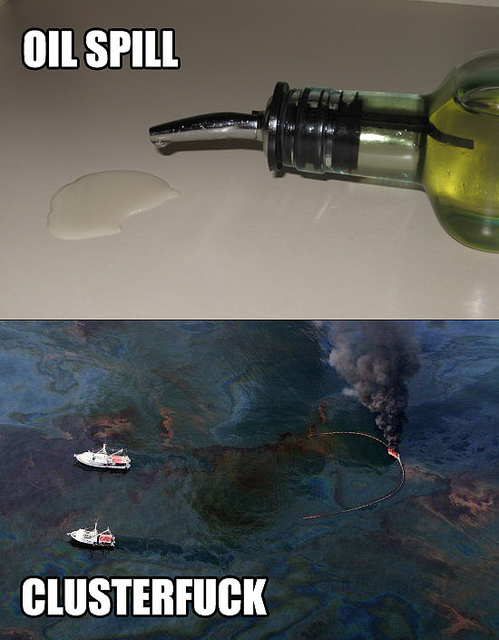
A natural gas well being drilled near Dimock, Pennsylvania. Charles Mostoller/Zuma
This story was originally published by Inside Climate News and is reproduced here as part of the Climate Desk collaboration.
Oil and gas producers in Pennsylvania used some 160 million pounds of chemicals that they are not required by law to publicly identify in more than 5,000 gas wells between 2012 and 2022, according to research published on Tuesday.
The chemicals may have included per- and polyfluoroalkyl substances (PFAS), a toxic and pervasive class of chemicals, according to the report from Physicians for Social Responsibility, an activist group that last week co-published a new compilation of studies on the harms of hydraulic fracturing for oil and gas.
The industry is required to disclose the chemicals to state regulators in the database FracFocus. But operators are allowed by state law to keep from publicly disclosing them if doing so would put their operations at a competitive disadvantage.
Although the FracFocus data does not identify which substances were among the chemicals, the new report says that at least one kind of PFAS was used by two oil and gas operators in eight Pennsylvania wells during the study period—information that was first reported by PSR in 2021.
PFAS were used by one company at four wells in Washington County and one in Beaver County. Another operator used the chemicals in three wells in Lawrence County, according to the report.
“Eight wells may just be the tip of the iceberg because we also found that there were 160 million pounds of trade-secret chemicals injected into thousands of unconventional gas wells over the same period,” said Dusty Horwitt, who wrote the report.
The Marcellus Shale Coalition, a trade group that represents Pennsylvania’s natural gas industry, said it’s “not common practice” in Marcellus wells to use PFAS as a fracking additive. “All trace additives used in the well completion process are transparently disclosed online and provided to state environmental and emergency responders, a step that Marcellus Shale Coalition members voluntarily took before it became law more than a decade ago,” said the group’s president, David Callahan, in a statement. He said Pennsylvania has “nation-leading” well-construction standards.
PFAS—dubbed “forever chemicals” because they don’t break down in the environment—and accumulate in the blood of virtually every American—are linked to serious illnesses including some cancers, low birth weights, ulcerative colitis, reduced receptiveness to vaccines, and elevated cholesterol. As evidence gathers of the chemicals’ threat to public health, US states including Pennsylvania have been increasingly imposing health limits on their presence in drinking water.
“Accumulation of certain PFAS has also been shown through blood tests to occur in humans and animals,” according to the FDA. “While the science surrounding potential health effects of this bioaccumulation of certain PFAS is developing, evidence suggests it may cause serious health conditions.”
The man-made chemicals act as stain and fire retardants, and have been used since the 1940s in a wide range of consumer products such as nonstick cookware and flame-resistant fabrics. They have also been used by the military in firefighting foam, resulting in high levels of PFAS water contamination near many military bases.
In March 2023, the EPA proposed the first federal regulation for six of the chemicals, including two of the most commonly found types—PFOA and PFOS—which, when finalized, will be subject to much stricter health limits in drinking water than any so far set by the states.
Critics of the oil and gas industry have long claimed that many chemicals used in drilling and fracking have the potential to contaminate the aquifers that supply drinking water to private water wells in Pennsylvania and elsewhere. The industry says its drilling fluids are separated from aquifers by layers of steel and concrete that extend through an aquifer, and that fracking chemicals are released thousands of feet below sources of public drinking water.
There has been very little study on whether the oil and gas industry has contaminated groundwater with PFAS because the issue only came to light in 2021 when Physicians for Social Responsibility published its first report on the issue, Horwitt said.
“We didn’t know until just a couple of years ago that PFAS was used in an oil and gas operation,” he said. “It seems to have been closely held information within the oil and gas industry. We want to make sure the public knows that oil and gas operations could be an additional source of PFAS pollution.”
Horwitt said the oil and gas industry uses PTFE, a type of PFAS, for drilling into rock because of the chemical’s friction-reducing qualities. The industry also uses “surfactants,” chemical compounds that can be used as detergents or foaming agents, and which may contain PFAS chemicals, he said.
In August this year, a study by the US Geological Survey and Pennsylvania’s Department of Environmental Protection found that streams near small rural towns surrounded by oil and gas development may contain “low levels” of PFAS contamination, especially from PFOA, one of the chemicals that the EPA plans to regulate.
That report said fluids and foams used for drilling and fracking of gas wells may contain PFAS, which “greatly increase” the recovery of petroleum hydrocarbons. Any PFAS contamination of nearby creeks and rivers could be traced to combined sewer overflows (CSOs), which take combined stormwater and sewage during heavy rains, the USGS/DEP study said.
“Research documenting the impacts of oil and gas development on PFAS contamination in surface waters is limited, but in this study the CSO surrounded by oil and gas development in local catchments could be a potential source of PFAS to surrounding streams,” the study said.
Pennsylvania’s Department of Environmental Protection, which regulates the state’s oil and gas industry, confirmed that operators do not have to obtain DEP approval for the use of chemical additives in fracking but must report what they have used to the agency within 30 days of completing a well.
The agency declined to say whether it permits the use of PFAS, but quoted a regulation saying the completion report must contain “a descriptive list of the chemical additives in the stimulation fluids, including any acid, biocide, breaker, brine, corrosion inhibitor, crosslinker, demulsifier, friction reducer, gel, iron control, oxygen scavenger, Ph adjusting agent, proppant, scale inhibitor, and surfactant.”
It also noted the state’s right-to-know law contains an exception for anything that “constitutes or reveals a trade secret or confidential proprietary information.”
The possibility that PFAS chemicals have contaminated groundwater in Pennsylvania or other states where the fracking industry is active would fuel concerns about the chemicals’ threat to public health, the PSR report said. “Should only a fraction of the unidentified chemicals used in Pennsylvania’s unconventional gas wells be PFAS, they could pose a significant threat to human health,” it said.
Although PSR reported the eight wells using PFAS in 2021, the new report is intended to raise concerns that the industry’s use of PFAS may be much more pervasive, Horwitt said. “With this current report, we want to empower residents and government officials in Pennsylvania to understand both the limited scope of what we know about PFAS use in the state’s oil and gas wells and the potentially much larger scope of PFAS use that is hidden by the state’s lax chemical disclosure rules,” he said.
The report urged Pennsylvania to follow the example of Colorado, which banned the use of PFAS by the oil and gas industry, and requires public disclosure of all chemicals used in fracking, including proprietary chemicals. It also called on Pennsylvania and the federal government to increase water testing so that they know where PFAS chemicals have been used by the oil and gas industry, end the exemption from hazardous waste rules for oil and gas waste and ban production and wastewater wells near sources of drinking water, as well as near homes and schools.














